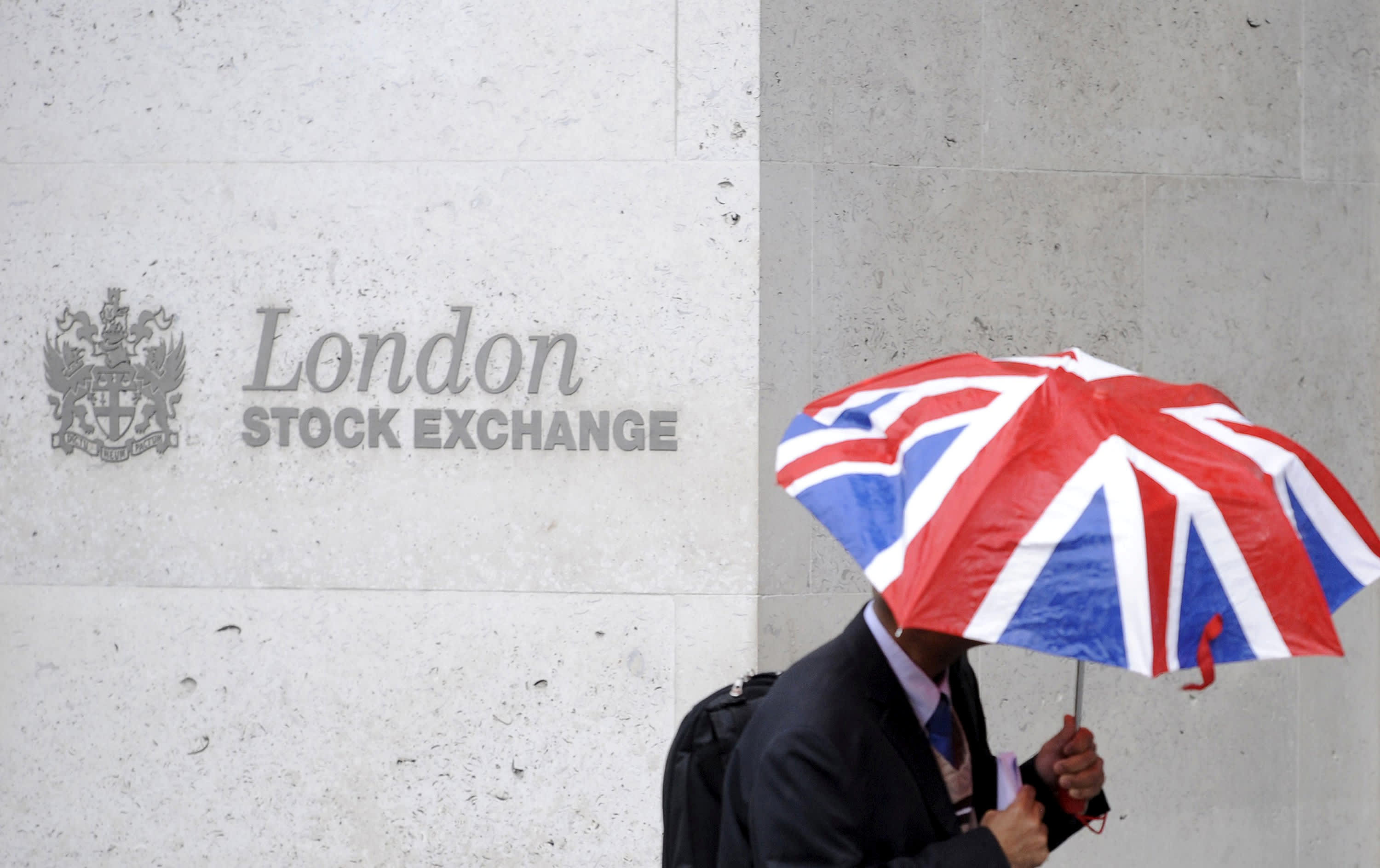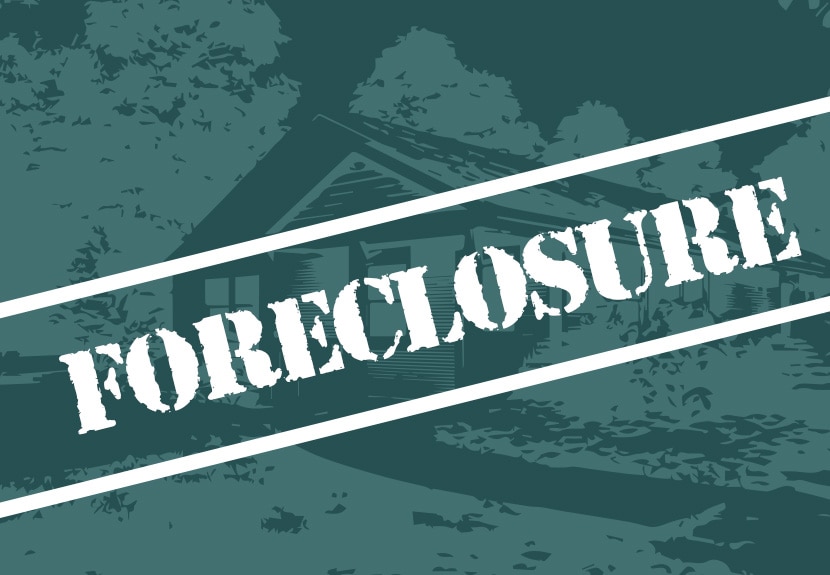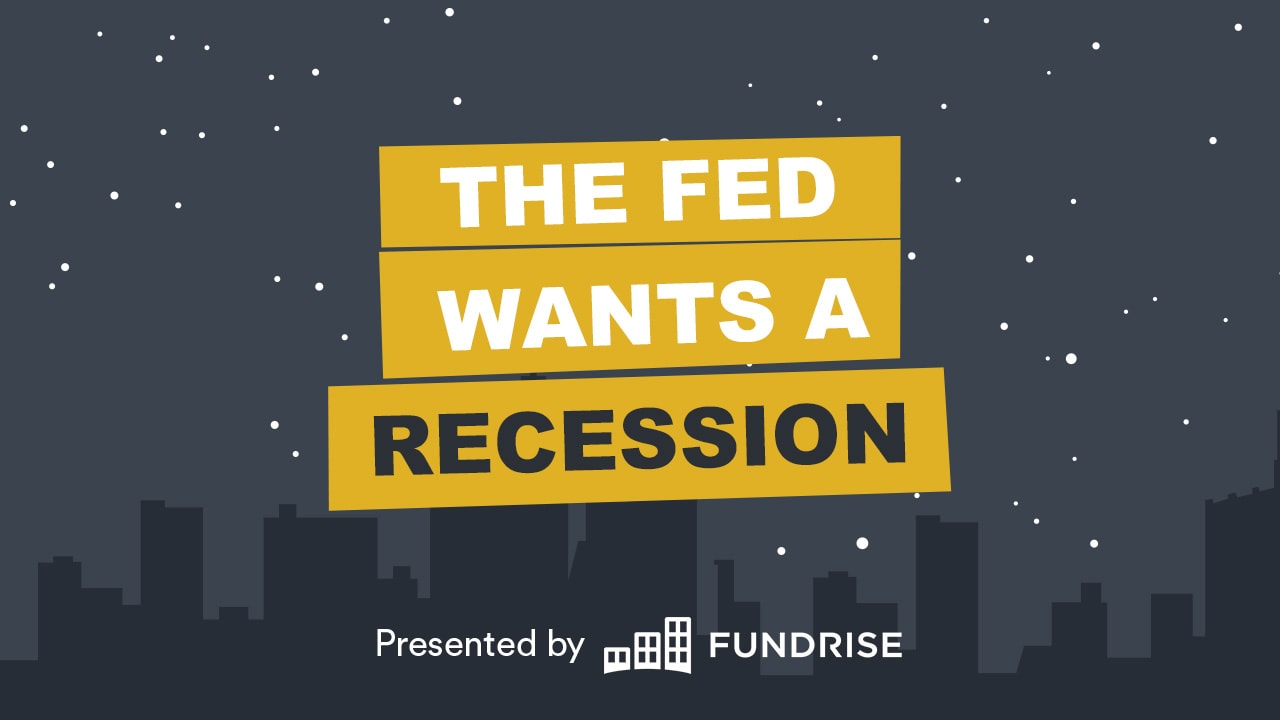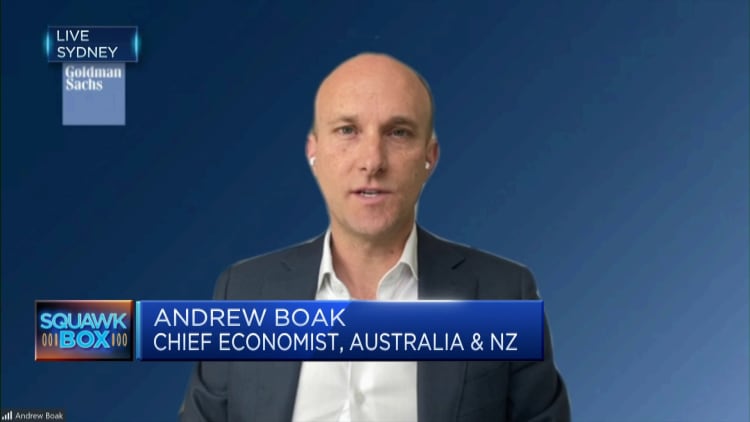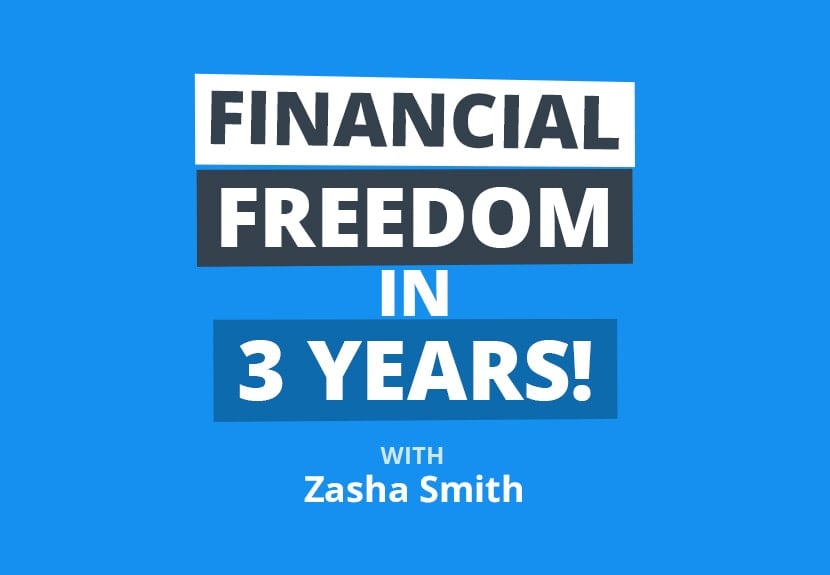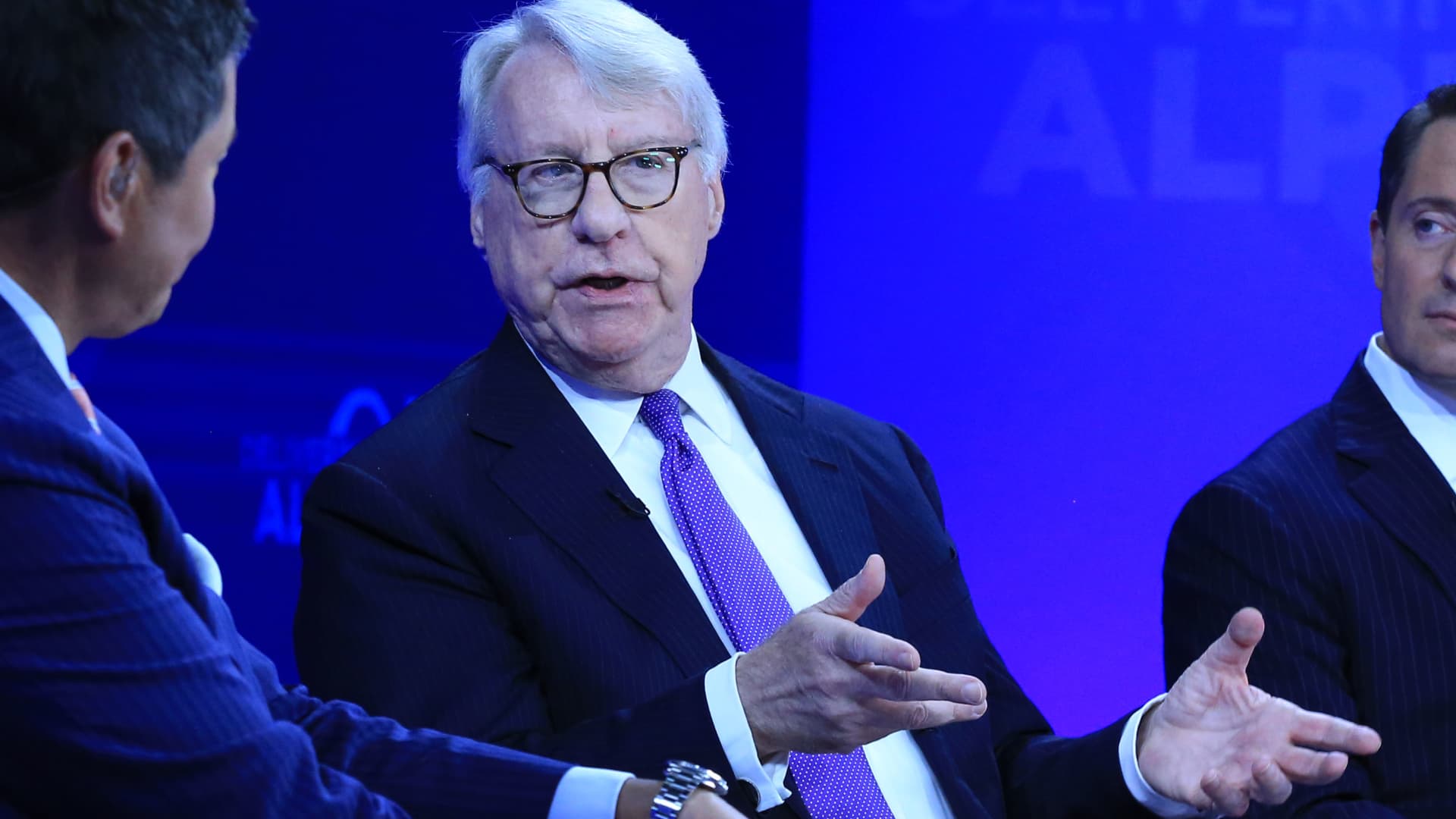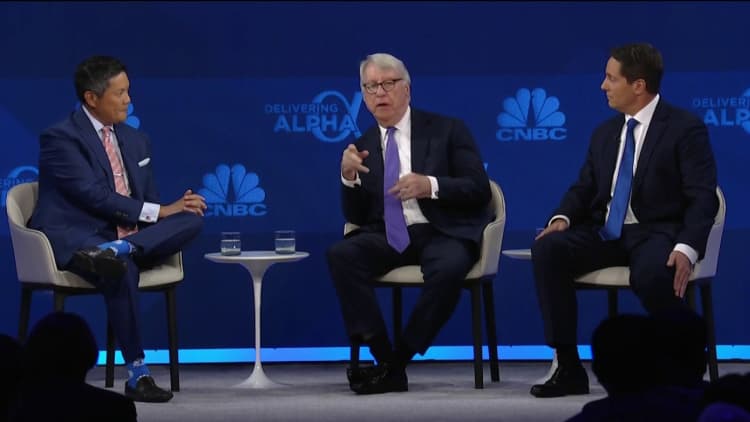Now, she’s got a portfolio capable of providing her a financially free lifestyle, with ten units acquired in just three years. Mind you, this all happened during the events of 2020, meaning Zasha deserves even more credit! She’s currently using her wealth to give back to the community, with plans to build affordable housing throughout her home state of Hawaii. Her “give back, get ahead” mentality is surely working, and it’s something all real estate investors should try.
David:
This is the BiggerPockets podcast, show 668.
Zasha:
I feel like educating people on what exactly it is we do as real estate investors is very important. We’re not out there buying deals for really low price points and then reselling it for really high without doing any work in between. A lot of times people don’t know we buy homes that are incomplete distress. They might have abandoned cars in the front, people might be in some financial situation that they can’t get out of, and we are providing different solution.
David:
What is going on everyone? This is David Greene, your host of the BiggerPockets Real Estate podcast. Here today with my co-host Rob Abasolo. If I sound a little different, you’re not crazy. Today I’m recording from Scottsdale, so I don’t have my normal audio and video equipment. I’m here in the casita of the house that Rob and I built because I freaking love this place and love being in the area. We’re recording the podcast. I’m in Scottsdale. Rob’s at his normal place, but we’re going to have to keep this intro short because somebody has to go to Austin, Texas with his wife because they’re lazy and don’t want to work.
Rob:
That’s true. Listen, listen, we have two children. They’re one in two and a half and we have never vacated. I think that’s how you can, we’ve never vacationed away from them ever. This is going to be our first. We’re going to leave tonight, leave Thursday, we’re going to be back on Friday. We’re scared. We have faith in my parents to pull this off, but to be honest, I’ve been sweating bullets thinking about it, but it’s going to be okay because I’m going to try to relax, which is something I never do.
David:
Today we have an awesome episode for you. We bring in Zasha Smith who is investwithzasha on Instagram. Sort of has a little connection to Brian and Turner out there in Maui. She’s a Maui investor and you want to make sure you listen all the way to the end, because we tell a very funny story of how Zasha took a deal right out of Brandon’s grasp. Recently I’ve become addicted to these horrible short videos on Instagram, which might also be on TikTok of crazy animals in Africa doing insane things. You’ll see like a lion come steal food away from a hyena or a crocodile, take food out of another crocodile’s mouth. And that was what reminded me of with this deal that Zasha talks about, is that Brandon thought that he had it and then boom, at the last minute she got it and she tells us exactly how so you can do it too.
Zasha is passionate about giving back while building wealth, and I love it because she doesn’t have it’s me or you. I have to get ahead or I can help you get ahead. She’s getting ahead while helping others and she does it in several ways. She does it by providing affordable housing to her local community. She does it by providing mentorship and knowledge through the partnerships she’s in and the masterminds that she attends. And she often approaches how to put a deal together in a way that works for everybody with a lot of integrity. If you’re somebody with a strong conscious that wants to find financial freedom, but you worry that doing that is going to make you a bad person, today is a fantastic show for how you can put that to ease and see a path that you can take that helps other people while helping yourself. Rob, what were your favorite parts of today’s show?
Rob:
Well, typically I would add in how the community aspect was great and how she’s questioned it on the content. But my wife did just text me and she said, don’t dilly-dally, you have to pack. I’m just going to say everything that you said was actually my favorite part. It was really nice to honestly legitimately hear the human side of real estate. I think that’s something that is very important for people to learn. Again, we’re all chasing cash flow. We all want that, but she really tells a story about how it’s like human first, right? Be personal with people and treat them like people. And if you do that, you can have really great success in this field.
David:
I want to get a t-shirt made that says chase excellence, not cash flow. The cash flow will follow.
Rob:
How about don’t dilly-dally, chase excellence. We’ll workshop it.
David:
I was actually going to make a reference to your use of dilly-dally, because it’s equally parts impressive and embarrassing that you were able to work that into show. Rob the 28 year old guy going on 77 every time we record. Before we bring in Zasha, today’s quick tip is, consider making real estate your job. There’s so many ways that you can make money in real estate other than just owning it and getting cash flow. You can flip houses, you can work for somebody else. Zasha has an acquisition manager that works for her, who is the hero in the deal that she took from Brandon. You can be a real estate agent, a loan officer, a title officer, a construction person, a bookkeeper. There are so many ways that you can make a living through real estate and the reason that I’m advising you to do it is you want the life that rob lives.
You want to be able to get in a car with your wife and take off to Austin and go to other places and not be thinking the whole time, oh my gosh, I’m using all my PTO. This trip is costing so much money, we can’t stop and get corn nuts on the way because we’re spending all of our money in gas. What you want to be thinking is, I’m going to take a trip and on this trip I’m going to make more money in real estate than I spent to go on it, so I get paid to take a trip. Real estate offers that flexibility.
Rob:
I don’t want brag, okay? I’ve tried to be as humble as I can here, but we are actually taking a bus to Austin, Texas. It’s Vonlane and apparently it’s nice, I don’t know.
David:
I gave you too much credit by saying this.
Rob:
Well you said we’re getting in the car and going. We’re actually taking a bus that apparently serves food and drink. I don’t know, I’ve never heard of it before, but should be fun.
David:
Just want to remind you, ask yourself the question, how can you make an impact as you build your wealth? It makes the journey a lot more fun as well as satisfying in the end. All right, enough of listening to me yak. Let’s bring in Zasha. And Zasha Smith, welcome to the BiggerPockets podcast. This has been a long time coming, so glad to have you today.
Zasha:
Aloha, everybody.
Rob:
Aloha.
David:
For those of you who don’t know, you can follow Zasha on Instagram at, is it investwithzasha? Is that the handle?
Zasha:
Yeah.
David:
Zasha and I have been aware of each other through online things. I think we met briefly in Maui one time and now we get to have her on the show. Zasha, can you tell us how you got started in real estate?
Zasha:
Well, I feel like I’m just the average person who was working there, W2. I had been working as a civil engineer for 10 years and I was working 60 to 70 hour weeks, going in on Saturdays. I seen my boss going in on Sundays and thought to myself, this is going to be my life. I’m now going to be working seven days a week on a 40 hour a week salary. I wanted a change. And so I basically started Googling something silly like, how to get rich and quit your job or what is the top way to build wealth? I found out that majority of the people that had been coming up had some sort of stake in real estate.
And so from there I stumbled upon BiggerPockets, started listening to the podcast, going on the website, connecting with other investors, started attending meetups and really gained that confidence to know that I could buy a rental property, because I live in Maui, Hawaii where the medium home price is over a million dollars. I never thought of owning anything else but my own home. And so that opened up my mind to see that there were other ways to buy these properties. I didn’t just have to qualify using my job or using my income, there are other ways to leverage debt. And so from there I just started buying properties.
Rob:
Okay, that’s awesome. Can you tell us a little bit about what your portfolio looks like today and then just a little bit of that trajectory over time as well?
Zasha:
Right now I have 10 rentals. I have nine long term and one short term, all here on Maui. It averages about $10,000 a month. It’s not $1,000 each property. My short term rental brings in about 3,500 to 4,000 a month, which basically makes up my nine other long term rentals net cash flow, which that ranges between 500 to 1,000 depending on the type of loan that I have on those rentals. And then I also do a lot of fixed and flip. So right now I have six projects going on. One is here on Maui, there’s one on another island, and then the rest are between Arizona, Georgia, Florida. I’ve been partnering as a way to scale the flipping business and have that active income versus trying to do everything myself. In the beginning I think I was a typical investor who was very hands on.
I was working my W2. I bought my first flip, which is a condo here in Maui and I was just using logic at that point. I found it on the MLS, it was listed at 300. I think I was using Zillow at that point. Contacted a realtor who was also an investor and said, hey, what are things selling for in this area? And he said, well, there’s a comp that just sold for 450. So I thought to myself, well, it can’t be that much of a difference between what it takes to fix it up and actually make money. And so that’s my indirect way of getting into real estate without overthinking it. Because I think a lot of first time investors get into that analysis paralysis. But for me it was just thinking logically and then taking action and using the resources that I already had in my circle and basically using the MLS which is available to everyone if you have access to the internet as far as Zillow, Redfin, and those other public sites.
And then from there I bought my first rental. I inherited a tenant, but initially I think it was cash flowing net 300. I bought that also off the MLS, used a conventional loan, and went through the process of trying to find them another place, trying to raise the rent, did it on my own, self managed. I found it to be very rewarding in the end because I was willing to work with them until they were able to qualify for affordable housing and buy a house of their own, versus just kicking them out from the start, giving them the 45 day notice. Even though I now cash flow between eight to $900 a month, it was more so helping these people get to the next step as well.
Rob:
That’s amazing. Can you remind us just for reference, when was that very first deal? How long ago was that?
Zasha:
It was in 2019.
Rob:
Oh wow. So really you’ve built a great portfolio in a few years here. And that very first deal that you were talking about, that was a flip, is that the one that you sold and then you went into a long term rental?
Zasha:
Yes.
Rob:
Awesome. I think this is the question, right? Everyone always says, how do I get started? When you’re getting into your flip, obviously as someone that, you were saying you were going based on the logic and you’re like, all right, it shouldn’t cost that much more to fix it and then make a profit here. Was this all self-funded, getting started? How did you actually get into that very first deal?
Zasha:
That was also used, and this is not advice for anybody getting started, using a conventional loan. I had no idea that you couldn’t use it to flip properties. I qualified-
Rob:
Okay, got it.
Zasha:
… using a conventional loan and then used my own funds for the rehab. It was about 30 grand. That was manageable for us. I was the typical person going to Lowe’s on my lunch break, meeting contractors after work, paying them cash, just doing all the things they tell you not to do. If you’re getting started, definitely look into hard money or private money or something else, because after that point moving forward, when we sold the condo, my lender was like, hey, you said this is going to be a rental? And I was like, yeah, that was the initial plan. However, we pivoted into selling it short term and after that he didn’t give me any more loans.
David:
Well, that’s okay, we’re here for you if that’s what you need. I guess because people don’t realize this, but if you buy a house with a loan or you refinance a house, sorry, if you sell a house that was bought within six months of getting the loan, the lender has to pay back all of the money that they made, but they don’t get compensated for all the time that they put into it. So that’s why people can get a little salty if you end up selling a house or refinancing within the six month timeframe. Little quick tip for everybody out there who may wonder, why did my lender ghost me and get so mad? I don’t understand, I made the right move. They don’t ever want to tell you that, but that’s should what it is.
I am fascinated by an element of your story, Zasha, where you hear everyone talk about wanting to do what you’re doing. There’s people that listen to podcasts, there’s people that see this online, they follow the people taking the action, but they don’t actually get out there and do it. What was it about your personal story that gave you the drive to take action where other people think about it and talk about it but they don’t be about it?
Zasha:
Definitely I think growing up in low income housing and just having that perseverance throughout my life to look for something better, look for a way to give back or help people that were in my position helps to drive me to get to that next level. And so even while I was working my W2, I always thought about what it would be like to have more. I’m getting into this engineering job to be able to live in an expensive market, but is that the only reason why I’m working? Is it to build wealth for my family but have no time with them? I was trying to find that balance or that median in order to be able to basically live a life of perseverance and make an impact at the end of the day. And whether that be to my family or my community, I was trying to find that way to pivot into that from the engineering job.
Rob:
Well first of all, I guess I want some clarity here. Are you still working your W2 job? Are you still in the field of engineering?
Zasha:
After I bought my first flip and my first rental in 2019, at the end I ended up joining a mentorship and then quit right away in January of 2020, right before the pandemic. I don’t know if it was universal timing that said, hey, I’m going to give you the hardest year to try to get into investing and you’re going to run with it or you’re going to fail. It was definitely a challenge getting started. In 2020 I had bought my first multifamily and my whole goal was to wholetail it. I ended up having to pivot because the person who was going to buy it, he shut down his office. He was going to buy it, he was a doctor and going to use it for his nursing staff.
And so during the pandemic shut down and I was forced to keep it. However, that’s one of my best deals yet. I’m cash flowing probably about almost $4,000, and it’s a fourplex. Majority of the people who live there have Section 8 HUD or some sort of rental assistance. It’s a very fulfilling property to have as well. And every time I go past it, I just am happy that I learned to have different exit strategies. So quick tip for everyone, if you’re getting started or if you’re looking at a deal, always look for multiple exit strategies that you could use just in case one doesn’t work out.
Rob:
You mentioned it’s a fulfilling property. Why is that?
Zasha:
I feel like it’s come full circle. Because I came from low income housing, I’m now able to help these people who have low income or maybe fell on hard times and are accepting assistance, because it does take a little extra paperwork working with government offices. And on my part, sometimes I have to wait till the fifth or the 10th of the month to get paid. You have to be willing to wait a little bit longer and put in a little bit extra work to work with these affordable rental assistance programs.
Rob:
Is this something that you, because obviously it relates back to your upbringing and everything on that kind of stuff. Is this Section 8 component of real estate, is this your way of giving back? Is that a big driver for you? Is it something that’s very familiar to you and you want to help others in the way that you were helped when you were growing up? Tell us a little bit about that, because I think it’s really important. I think it sounds like there is purpose behind your story and I’d love to hear that, because I think a lot of us will lose sight of why we’re even doing this in the first place.
Zasha:
When I was growing up in the low income housing, it just taught me very much to be humble, but also to strive for a better life. I know things happen to people in their lives, whether it be death, whether it be some sort of health condition that falls upon them or they get fired from their job and now they don’t have any income. I understand how it can happen to people. And people always are asking me, what do you do to prevent yourself from, I’ve heard all this bad things about Section 8 that they’ll trash your house? I say, they’re like any other renter, you have to vet them. So run your background checks with them, check their credit score, talk to their current employers and previous employers and same for their landlords. If you vet your tenants correctly, then everything should fall in place.
Of course it’s not a hundred proof, but at the same time give them a chance like everyone else and vet them but also stick to your standards. One thing that I do differently with my tenants on Section 8, is I let them know, hey, I understand where you’re coming from. This is my property. If anything happens to it, it directly affects my family. I am hoping that we’ve built enough rapport with each other that you understand where I’m coming from. I’m going to be a great landlord to you if you be a great tenant to me. We’re working together on this. So it’s more so of us working together that will help them sustain a place to live.
Because a lot of people here don’t accept Section 8 and it’s for that exact reason, is they’re worried about drugs, they’re worried about nonpayment, they’re worried about them trashing the home and everything like that. But I don’t look at that first, I look at that after I vet a few of them.
David:
A lot of us came from backgrounds where we didn’t have everything we wanted and the drive to get ahead often comes from pain in our past and everyone has some form of pain they can tap into. It’s not like it’s unique just to you. But then I’ve noticed that while your past can be the fuel that can help you overcome the obstacles to get the future you want, like what you’re describing, there’s also traits that sometimes we develop in our past that do not help us when we’re getting to the next level. I feel like a lot of successful people have to navigate the waters of, what do I hang onto from my past? What do I have to let go of to think differently? Can you explain a little bit about what your specific journey was like with how you reconciled those two things?
Zasha:
I definitely am still working through a lot of things I think I went through during my childhood and then also during my young adult years. But I think I still struggle with that as far as using that as my drive. But now where do I go now that I’ve kind of made it to a level where I don’t have to worry? I’ve reached my financial independence number, I don’t really have to build a bigger portfolio. How do I keep myself driven to wake up every morning and definitely move forward with my journey? It’s definitely something that I’ve always struggled with. However, I feel like I just think about the amount of people that I can help and that has helped push me forward as far as being the driver for me now. So every person that I get to help on their journey, help them even start to think differently.
Because a lot of this I found is your mindset. I never really thought about it until last year. I went through Steve Rosenberg’s mastermind, and he was really heavy on mindset. I didn’t know how much that affected me. I thought I could just do one deal at a time, but he taught me to open up my mind and be like, hey, why don’t you shoot for these bigger goals? I’m like, oh well, I want to know that I can achieve things. And so he really got me to think bigger. I think a lot of people are stuck in that. They’re just looking right directly in front of them instead of ahead. And so I think that helps drive me, is helping other people to see the bigger picture.
Rob:
I love that. It’s a really honest answer and I’m honestly really glad that you said you’re still working through it, because I’m honestly in a similar place. My parents are immigrants from Mexico and they are a lot of what drives me and that is a big part of my story, and people are like, Well why do you still keep working? You don’t need to work. Haven’t you figured it out? You seem like you haven’t figured it out. But I’m like, I don’t know, I’m still working through all this. I just want everybody to be taken care of. But then I have this complex where I’m like, well I want to keep helping people. That’s a big part of my platform as well. And so mindset is definitely something that is constantly evolving for me.
I know that you’re really big into this like you just talked about, but you’re also really big into masterminds and getting help that way and evolving your mindset. What are your thoughts on investing in that type of thing and getting help that way versus learning the hard way?
Zasha:
I feel like if you have a lot of time, definitely go through all these things. You can go through all these things on your own. However, if you’re looking to scale and really cut your learning curve, going to masterminds, being a part of mentorships, going to events will help give you the network and connections that you need in order to get to your goals quicker. For me, I always try to, the biggest tips I can give people is to make connections, whether that be going to virtual or online meetups, whether that be going to paying money and investing in yourself for these programs, it definitely comes back tenfold. Even for me I just went to the Maui Mastermind this last week, met millionaires and billionaires and people making a lot of money, but was also able to connect with them on a personal human level and be like, look, these are things we’re all struggling with and we need to be able to help each other.
I was definitely the smallest fish in the room, but I also had the largest social media following. So you’d be surprised on how many people came up to me asking me about that component. So really think about too how you can add value to other people when you’re going to these meetups or when you’re making connections, think of something you’re good at and how you can use that as a platform for you to help them and in turn they’ll remember you.
Rob:
You know what, I’m so the smallest fish in the pond and I love that. There is so much to gain from being the smallest fish in the pond. Because once you are the biggest fish in the pond, it’s very hard to find anyone that can help you in teaching. So for me, I like surrounding myself by people that are much smarter. There is always the stigma of education and mentorship and masterminds, but I’m just like, no, not really. You want to surround yourself with people that have similar goals, because I think personally there is just nothing more inspiring than being in a room full of people that are as on fire as you are or even more on fire.
I just actually was talking about a similar thing, Zasha, where I was in a room at a conference one time in the green room, in a room full of millionaires and billionaires, and it was so crazy because they were just regular people. I think that’s the crazy thing, because you elevate these people to be super brilliant computers basically. And then you talk to them and you’re like, man, you’re just a regular person and you figured it out and you’re smart. And you’re like, I’m smart too, I think I can figure this out. And I think it’s unlocking that. Right? Are you still a part of masterminds and mentorships or is that something that you continually invest in?
Zasha:
Yes. Every year I try to at least go to four different events. I am a part of a few mentorships and Ryan Pineda’s Future Flipper program is how I started my journey there. The first mentorship I ever joined. I was very hesitant at the time. It was $10,000 to join. I was like, but I could learn all this stuff on YouTube or I could do this on myself using BiggerPockets. It was hard for me to dish it over, but it also gave me more motivation to make sure I made the most out of this program. I was going to come out of it with achieving my goals and just connecting with as many people and making those personal connections as I could, because I was like, oh my gosh, this is a lot of money for me, going from doing it all myself to now dishing out all this money. It makes you motivated to make the most use of whatever program you’re in, especially if it’s a lot of money to you, then why would you waste it?
Rob:
Big time. That’s honestly what it all boils down to. There is so much free content out there, right? There’s the podcast, there’s the YouTube side of it. I think what really the core nugget of it is always, can you take action and is there something that you can do to take action that will really fuel you and really set you on fire to pursue these goals. I know you started scaling up from where you started to now. Can we start talking about, you said that you started partnering up with people, you live in Hawaii and then you said you had a place in Arizona that you’re flipping and then another place somewhere else, how does that all work? Why are you partnering up with people to scale? What is that strategy?
Zasha:
Basically my goal is not to build a big wholesaling or flipping team. I want to essentially split roles by partnering. Right? Majority of the time I do equity split. So whether it’s 50, 50, 70, 30, depending on if I’m the capital partner, capital raiser, or they need me to qualify for the loan because they’ve never done a rehab loan, say they own a few rentals or they need me to manage the contractors or walk them through escrow process. Or they are experienced investors and they say, Zasha, it’s Wednesday and I need $300,000. If you can raise this or bring this by Friday, I’ll give you some equity in this deal. I think there’s a lot of value in being that person that they can come to. And also I never wanted, flipping was never my goal. My goal is the passive income. But along the way, if there’s opportunities to make some active income along the way, then I’m more than willing to do that, and also helping other people get started.
Of course these are people that I’ve connected with, known for a while, met through mentorships or we have connection with each other to hold each other accountable. I’m not partnering with random people, just to be clear, but they’re bringing some sort of value or deal. I’m checking with my network maybe in that area or in that state, in that market, and being like, Hey, this person brought this deal. Is it good or not? They have the CMA from the realtor, they have the contractor bids, so they have all the details of the deal in place in order for me to make an easy decision.
David:
I was just about to ask you, how do you choose the partner you’re going to get with? Because the concept of partnering is very different than the practice of partnering. It sounds like you’re meeting them through these same groups that we’re talking about.
Zasha:
Majority of them I’ve either met through mentorships or my community. And of course each partnership is different. You could have all these numbers align. However, once you start working with them, you’ll see their personality or morals, integrity, where their decisions lie, and then you can decide if you want to continue working with them or not. I think it’s very important, one, whenever you’re thinking about a partnership, to talk about communication, to see where they’re at as far as what decisions they’re going to make or how they would think about a certain situation. And then, two, definitely getting something written down on black and white, what your role is and what their role is and what the expectations are.
Because I think that’s something that’s overlooked, and you’re like, yeah, this would be a good idea for us to partner. However, once you get in it, you thought that person was supposed to do something and they didn’t, however nothing’s written down, then it’s harder to keep each other accountable.
David:
I’ve noticed one of the big hesitations, and to be frank, I was the same way. I didn’t want to join GoBundance because at the time it was like $6,000 a year and I don’t want to spend the money, I don’t have to do that. I can read a book to learn it. I had that mindset for a very long time. But then when I joined GoBundance, I got put in touch with a person who got me a line of credit at a bank in North Florida, that ended up leading to 35 properties that I bought that they finance that I wouldn’t have been able to normally do. And through that process I learned a whole bunch. I wrote the BRRRR book, I taught people about BRRRR. Now every partner that works with me in a deal gets all of the knowledge that I gained from everything I did, brought into what they’re doing.
Like Rob was just talking about a deal we bought, he got to watch me kind of teach our realtor how to negotiate it. And now everything that I know goes into Rob’s head. Rob now applies that to all the deals he does. It builds this exponential momentum when you get around the right people, because everything that they’ve learned and spent money to invest in you get. I didn’t just pay $6,000 to join GoBundance. I paid $6,000 to get access to the hundreds of thousands of dollars of money the other members had spent developing their mindset, learning things. And partnerships sort of function in that way in that same way too. Do you mind sharing with us some of the things that you’ve learned from partners that you’ve brought in, so you didn’t just give up 50% of the equity, but what you gained from the other person and how that helped your business?
Zasha:
Majority of the time I’m the one teaching someone else or helping to bring these newbies up to their first deal. In 2020 I had partnered with someone or became an accountability partner with someone and helped walk them through their first wholesale deal, helped walk them through a first flip partnership together and then now they’re off and doing it on their own. That experience in itself helped this person take off on their own. If you think about, it’s getting to do deals together, but also having someone to walk you through, getting their connections if it’s their contractors, their escrow company, seeing who they use for their lenders, getting access to them and then also having that safety net if anything were to go sideways you know how to get through and problem solve and find a solution.
I think that’s the biggest key takeaway when you’re partnering, is that you get to leverage each other as far as finding a solution for that deal and making it happen.
Rob:
I’ve done a few partnerships. I want to ask you first, maybe I’ll give an example here, but are there any things that you’ve learned the hard way through a partnership? Was there ever a moment where you’re like, probably won’t do that again? It doesn’t necessarily reflect badly on the partnership you have now, but just a learning that you can apply for future partnership.
Zasha:
When partnering it’s very, very important for you to define your roles. And for me, I always thought partnering with contractors would be the greatest idea, because that’s most of the time the biggest headache as far as dealing with projects, is the renovation. I’ve partnered with a few contractors that didn’t really work out because they don’t understand the investing aspect. They see us purchasing a house at 600,000, we’re selling at a million, but we’re also putting 200,000 into the renovation. We’re also paying money costs. There’s a lot of costs that go into these projects that people don’t really understand that. It’s not the sell price minus the purchase price and the renovation, there’s a lot of costs in between.
And so even when you’re partnering with people that are let’s say contractors in the deal, they’re putting their sweat equity in, that’s how they’re contributing to the partnership. But there’s so many other moving parts that they may not understand and no matter how much you try to explain to some people it doesn’t register. And so at the end of the day, they might feel like they’re getting the short end of the stick and vice versa. That’s what I talked about in the beginning, is being very clear on the roles and who’s doing what, so everybody’s on the same page. But at the same time some people think that what they’re bringing to the deal might be worth more than what you are bringing to the deal.
And so that’s what I’ve learned from partnering with other contractors, is that it doesn’t always pan out the way that they really think it is. And once they realize, oh my gosh, you’re not making that much money, then they decide not to do any further deals with you and then vice versa.
Rob:
Totally fair. I’ve been in this situation where we did very clearly lay out roles and expectations and so that partnership has always worked out super, super well. But the one thing that I’ve realized with a lot of the partnerships that I started in, is I just didn’t future proof myself. I didn’t really plan for the future because it was a really good deal at the time. And I was like, great, I’m going to do all the sweat equity, I’m going to do all the work. And at that time it was great, it was gravy. But now with the way that my portfolio has grown and where I’m moving to in real estate, some of those roles and responsibilities really just don’t make as much sense for me. And I just didn’t have the foresight to really know, hey, in two years from now, if I’m successful at this, I’m going to be super busy. I should probably think about that.
And so that’s one thing I always try to tell people, is that exact thing. Because really if any tension ever starts to build up, if you’re not super clear about those roles, if one set of partners believe that they’re doing more work than the other, it can be a little bit tougher to maneuver all the way through. I know that you’ve been doing this a bit and I also wanted to ask a little bit about the mentorship versus partnership component of it. Are you ever going into a partnership specifically with the intention of mentoring? Is that just part of the job? Is that something that you’re doing less now that you’re a more seasoned and experienced investor?
Zasha:
Yes. In the beginning when I first started partnering, because I’d never partnered before, I had done maybe about seven or eight deals before I ever started partnering. For me too, the first partnerships that I had, I didn’t really know what I was doing or how it was supposed to be. And so I took the spot of more so mentoring people into being comfortable investing. Now it’s very clear roles, I bring the capital or I qualify for the capital, I’m the one making the monthly payments, whether it be holding costs, utilities, that sort of stuff, turning on the utilities, coordinating with escrow. And then you are the one who’s the boots on the ground coordinating with the contractor, making sure the timeline and the schedule is on par with where we’re supposed to be.
It’s very clearly defined roles, and if they ever want to know anything about what I’m doing, I definitely share that with them, but not necessarily take them through every single step just because I have way too many deals going on to be doing that with every single person.
Rob:
Obviously that makes a lot more sense getting started and you’re working in. And just for the record, I don’t think that there is any bad partnership when you’re getting started, specifically because you will learn so much. I think the benefit is education. A lot of people they’ll see deals that I’ve done and they’ll say, well, hey, I know that you partnered up with somebody and you gave 50% equity and they got 50 and they put up all the money, I want that too. And I’m like, well, hold on, hold on, hold on little one, you can’t always demand 50% when you’re getting started, especially if you don’t have a track record of an investor comes to you and says, hey, I’ll front the money, I’ll do the financing, but you’re only going to get 25% or 15%.
I’m totally fine for a new investor to take something like that, because it’s the experience of working with an investor and with a partner that’s valuable in your first deal more than the cash flow that you’ll ever make.
Zasha:
I totally agree. Especially when you come at it from a humbling experience. I have a lot of people who want to intern with me, hey, I’ll do this for free. But essentially too you have to think about what are you good at and what value can you bring to this experienced person? Because they probably have VAs ready to do things, they already have systems and processes in place. How can you add value instead of making them work harder to figure out, okay, what are you good at? Where can I fit you into my business? You got to make it easier for that person, but also think about the amount of experience you’re going to get or comfortability and confidence in yourself if you see somebody else doing it, know exactly their process and how they’re making it through this business. You can be a fly on the wall or help them do paperwork or something like that and just be around. That’s extremely valuable.
I wish I had somebody when I first started getting into this business like that, but I didn’t know what I didn’t know. I went to these meetups and I thought everybody was doing their own deals. Especially when you go to competitive lead generation, like going to the courthouse steps, going to auctions, everybody has the mindset of, it’s me against you. Right? That’s the mindset that I had coming in, was everybody was to each their own. And recently after joining mentorships, it really opened my eyes to the power of collaboration and having an abundance mindset. If you can win and I can win, why don’t we work together?
If you have a strength and I can help you with something that the deal needs such as capital, why don’t we work together, do our individual roles, and then we can both make money. If you’re trying to do this whole entire business on your own, you will quickly get burnt out or you will quickly find out that in order to scale you need other people.
Rob:
The abundance mindset, someone wants told me you get nothing out of being competitive with a friend or a partner. There’s enough out there for everybody. I think as soon as I heard that, it just unlocked this like, and I was like, oh man, it’s so true. Because a lot of people, on YouTube I talk about all the stuff that I do. I talk about how much money that those investments make. I talk about markets and I’ve had so many people that are like, are you crazy? Why would you give away all your secrets? Now you’re just creating your own competition. And I’m like, there’s millions of homes in the United States, I think I’ll be okay. I think it benefits people to learn and do it the right way because there’s a little bit of integrity that we have to teach people on how to do this, how to do this the right way, how to real estate correctly, if you will.
David:
Zasha, I think that the mindset work you’ve done has clearly had a very significant impact on how successful you are. It looks like every time I follow you, you’re exponentially increasing how successful things are starting to fall into place. I can see that that investment is starting to pay off. Talk to our community, tell us, what exactly are you doing? What does your day look like as far as how things are structured? And what type of stuff catches your attention, you go, I like that person, or I like that situation, I like that setup, I’m going to put more attention into this, versus the just amount of stuff that hits you in a day that you realize that isn’t worth my time and attention?
Zasha:
What has completely changed my life I feel is a morning routine, because I have a family, I’m a mom, I’m a wife, and I’m also an investor, it is very easy to get run down by the day. So waking up early, I wake up at 4:30 in the morning, then quickly I just jump out of bed and start working out, get that done. Write my affirmations. That gives me confidence going into the day. And then I write down the top three things that I got to get done to help me stay focused. Now, this isn’t always happen, there are days where I take breaks, however, for majority of the time I try to stay consistent with that. And then from there I go into Asana. I use that for my team as far as my social marketing team, my investment team, my VAs, we all coordinate in that platform and figure out, okay, what are these tasks that I need to do for that day? Get that done.
And then from there, if there’s any new deals or new leads that come in, then I evaluate that, see if that’s a market that I want to get into, a strategy I want to use, or maybe it’s potential for long term cash flow. And so recently I’ve been really getting into RV parks, and so I’m entering into a partnership that they live in that area, they already have properties in that area and they want to partner with somebody to bring capital. And so that is where I’m seeing my role as far as an investor goal, is to not necessarily focus on a specific strategy, but focus on a specific role in a deal. And so that’s what my role is going to be moving forward.
I’m trying to see if I can start a fund because it is hard once you sell a property, give the funds back to your private investors and then all of a sudden you contact them for another deal and then the money’s gone or they’ve used it for something else or they decided to renovate their bathroom and their house. I’ve been finding that getting into other bigger, higher level strategies has been the way that I have to go now.
Rob:
That’s really cool. Is that your method for scaling? Because obviously you were doing a lot of the flips, you’re partnering in that capacity, but now you’re looking at RV parks. I’m doing something very similar here. Are you doing that, A, because it’s a really cool, I think RV parks are fascinating, but B, is this just your path towards scaling?
Zasha:
Yes. It’s one of the paths. Last year I bought my first short term rental and it has made almost just as much as nine of my long-term combined. It just opened my eyes to the possibilities of doing these more hospitality sort of investments versus the long-term. I’m still going to do the long-term investments, but it’s been harder. I feel like everyone now it’s a bit more of a struggle to find deals. So if I can get into these hospitality RV parks or Airbnbs that can essentially make the deal still work without it having to be a long term investment, then I’m going to jump into those. I don’t know if that was a good explanation for that, but-
Rob:
No, it’s really good.
Zasha:
… that’s definitely what I’m thinking about. The path to me is being that person, figuring out what role, but not really concentrating on the strategy. I’m still open to bigger multi-unit apartment buildings and other strategies. It’s just focusing on what is my role, what value can I bring to that deal that will benefit everyone.
Rob:
Well it sounds like you’re out there, you’re teaching people in the community, obviously you’re very active on social media, you’re getting information out there and you’re effectively mentoring the masses, so that they often say that you are as good as your reputation. It looks like you’re killing it basically. I wanted to ask, from your perspective, what are you doing in your life and your role in your real estate career to impact the local community?
Zasha:
I feel like educating people on what exactly it is we do as real estate investors is very important. We’re not out there buying deals for really low price points and then reselling it for really high without doing any work in between. A lot of times people don’t know we buy homes that are in complete distress. They might have abandoned cars in the front, people might be in some sort of financial situation that they can’t get out of, and we are providing different solutions. And a lot of times we put hundreds of thousands of dollars into renovating these homes and then of course selling them for a profit. However, when you own a home, you get to choose who you sell it to, so you could potentially sell it to a first time home buyer.
You don’t always have to go for the highest price or the person that has the most money or is coming in for cash, you can choose to work with someone who you feel will bring value to that community. And that’s how I found a lot of people when I do buy these homes, ask me or while we’re in renovation phase, come up and say, hey, we would love for you to put a local family in there because this is the vibe of the community and we want them to contribute and not just move here and then find another place, move out. There’s different ways where you can have an impact without compromising your morals or integrity and also adding value to the community.
And then as well for the rental side, for long term, you can choose a Section 8 tenant versus someone willing to pay a couple hundred dollars more if you’re at the regular rental rate. It all depends on your financial goals and your financial situation. However, I’m at a place where that’s important to me, so it may take a little bit more footwork working with the HUD offices, it may take a little bit more time to get their rents in on time, but I’m willing to work through that in order to keep with my goal in making an impact on the community and adding value.
Rob:
Do you think you’ll continue investing in affordable housing as you continue to develop your real estate portfolio and your career and everything?
Zasha:
That’s definitely my goal, especially being from Hawaii and it being so expensive, I knew that when I was going through high school that I had to go to college and in order to move home, I had to be a doctor, a lawyer, an engineer to be able to afford to live here. And so with that in mind, I definitely want to build an affordable housing project or have affordable housing subdivision here in some sort of capacity. But I know along the way I still have to build wealth and make connections and have that in my, I guess, tool chest in order to do these bigger line items, do these bigger, I guess, envisions of projects.
Rob:
That’s awesome. That’s impact. Again, that comes down to purpose. I think a lot of people, I think if you just always focus on the financials and the money, that’s fine. Obviously you can have a successful career doing that. Doesn’t necessarily mean it’s going to be fulfilling. Right? It’s really encouraging to hear that you’re out there doing this. I’m curious, I know you probably work with a lot of potential sellers, what’s your process for working with different potential sellers out there?
Zasha:
Anything found off market when I’m working direct with the homeowners, I ask them, hey, a lot of times it’s referrals. So people refer me to other people. I’m huge on reputation, especially being from a small community on a small island. How you do one thing is how you do everything. And so when I approached them, I ask them, hey, have you talked to a realtor yet? Have you thought about getting a personal loan? If they’re in some sort of financial situation. Have you talked to your family members? Can they help you? Do you need me to mediate that conversation? I have a network of lenders and of realtors and other people in this business that might be able to help you.
And then if you want to work with me, I’m always the last option. I want to know that you’ve explored everything and I am the reason why you need to sell to me, not just because you know wanting the cash offer. I want to know that not necessarily I’m the last resort, but you’ve checked all the boxes before you came to me.
Rob:
Well, that’s cool. That’s something you don’t hear every day, genuinely. You want to, hey, I want to be the last resort, right? That’s really cool that you’re actually helping people through that process. Again, it’s a human element. Real estate you’re dealing with humans every day. You got to treat people like people. It’s the only way that you’re going to have a fulfilling successful career. Again, I guess you could do it without doing all that and be successful, but it’s like, do you want to make money or do you want to make money and be fulfilled? Why not do that? You can have both. You can have both in this industry, and I think that’s something that people always lose sight of.
Zasha:
When I feel like this is a lot of relationship based, whether it be working with other investors, whether it be working with sellers or other people, the escrow company and the title company, it’s all about relationship and trust. And so my biggest deal for example, came from me partnering with a seller. I had no idea that that was even a thing that you could do as far as being creative with it until I found out later on through mentorships. But the seller actually wanted to partner with me and said, hey, well we get a little bit more money if we hold the loan and then you do the renovations and then we sell it. And so that was an instance. That was my biggest deal honestly, was they had brought this partnership aspect to me. And then now it’s called, a lot of people refer to it as innovation, where the sellers still own the property, they hold it, and then you bring renovation funds.
We had agreed on a price of about 450. I brought 200,000 in private lending funds. We fixed it up and it sold for about 975. And so I had let them know, hey, initially the ARV was eight 50 and now the market has gone way high and now we’re able to sell it for 975. Are you okay with the initial amount that we agreed on? Because if it went the other way and it went down, you would still get that money, and they were fine with it. They are definitely a different type of people. It all depends on the relationship you have with the owner, especially when you’re getting creative like that and you don’t own the home, so you don’t have that much control. However, if your relationship is good with the owner, then that’s a different way to make it work in an expensive market and also partner with sellers.
David:
In your method of making sure that you are giving back more than you ever take, you have three things you’re focusing on. And that would be partnering, which is giving mentorship to people through deals. So you’re sort of pouring into the individuals that are learning the game that we’re playing here. Investing with integrity, which is giving without expectations. And then providing affordable housing for people that are not aware of how the game works, but still need somewhere to live that’s affordable. Right?
Zasha:
Definitely.
David:
I think that’s wonderful.
Zasha:
I want to build wealth and then make an impact too. I think that’s the underlying-
David:
Same time?
Zasha:
Yes. And you don’t have to be perfect, and that’s what I’m saying, is that you can use your resources to go through things. I think there’s been people throughout my life who have given me the insight or courage or confidence to be able, I had no idea about finances or loans or debt other than buying my own home. But as far as investing and doing all these things, it was just people along the way. Maybe lenders, the title company. I had no idea how to partner with sellers until I went through the escrow company. I said, is this a real thing? And so they helped get the legal paperwork together. They said as long as you and the seller are on that same page, then we can draft up whatever legal documentation you need.
I never really thought of that before. I always thought to traditional investors buy things with cash. They use hard or private money, and that’s the only ways. Again, it’s just asking people along the way, being curious. Right? And so I think that’s helped add a lot to my journey as well and helped me scale, because I’m not afraid to ask questions.
David:
This has been very good Zasha, a ton of actual, easily repeatable content that people could follow. I’m going to move us on the next segment of our show is the world famous deal deep dive. In this segment of the show, Rob and I are going to fire questions directly at you one by one and learn about a particular deal that you’ve done. Question number one, what type of property is it?
Zasha:
It’s a single family.
Rob:
Awesome. Question number two, how did you find it?
Zasha:
Driving for dollars with another accountability partner.
David:
This is starting to sound familiar. Question number three, how much was it?
Zasha:
375,000.
Rob:
Question number four, how did you negotiate it?
Zasha:
I had an acquisitions person negotiate the deal and they actually had the house, owned it free and clear, had a few liens on it, but were able to walk them down because they had previously talked to a realtor who said they had to clean up a bunch of the items that were on the property. They didn’t want to do that, so they were open to working with an investor, taking it as is.
David:
Awesome. How did you fund this deal?
Zasha:
All private money.
Rob:
What’d you end up doing with it?
Zasha:
I ended up keeping it using the BRRRR strategy, getting all my money back out, paying back the private lender and essentially just wanting to add another building to the property, it’s called an Ohana. That is our goal right now. We ended up splitting the single family into a duplex. It was a two story, so we split that and then now we’re going to build another duplex on the same property.
David:
An Ohana unit if you haven’t heard of it, is what they call an ADU in Hawaii, it means family. It would be like if you wanted your mom and your dad or your mother-in-law to live in your property, you’d build them in Ohana unit. My last question, what was the outcome on this deal?
Zasha:
We have multiple exit strategies for the deal. And so right now we have two renters living in it. One renter actually is church member of Brandon Turner, which his wife’s best friend lives right next door. And then also on the bottom unit is a lady who is waiting for her Hawaiian homeland’s home to be built up country.
Rob:
Awesome. What lessons did you learn from this deal?
Zasha:
Be quick to act. This deal was actually, when we were driving for dollars, we’d seen it, we got the deal and decided that we’re going to mail them, we’re going to leave our cards there and then eventually coordinated buying the property. After that, whenever I buy a property, this is a good tip for those who are just starting out or maybe seasoned investors, something you never heard about. I give my card to each and every neighbor that is around that area to let them know, hey, if you see something suspicious, please let me know. Or if my contractors have parked in your area or are making too much noise, you can always call me. I’m the new owner of the home and I definitely am trying to add value to your area and also to your home.
And so it was funny because the lady next door, I guess was Brandon Turner’s wife’s best friend and she ended up calling Brandon and saying, hey, do you know this girl Zasha Smith? She just bought this house. And so he messaged me and he said that he was actually looking at that house for a while. They drive past it almost every week. He had been meaning to knock on the door, been meaning to contact the owner, but just didn’t get around to it. I end up getting the house and now have, it’s renting right now for around $6,000 a month. The mortgage on it is about $500,000 a month, $500,000, and we pay about $2,300 a month for the mortgage. And so it ended up being a really good deal and recently just appraised for a little over a million dollars. And so he was a little sour about that.
David:
Everybody listening, go message Brandon on Instagram and tell him to listen to this episode’s deal deep dive and let him see to the victor the spoils. All right, I actually have one last question, I was wrong. Last question from me. In this deal, who was the hero on your team?
Zasha:
Definitely my acquisitions person. It happened to be, she had been wanting to invest and start her investing career, had been in a mentorship but never took action. And so we became accountability partners, because even as a seasoned investor, it’s nice to get out there and be reminded of the different ways you can find deals, not only through cold calling or texting, especially if you haven’t door knocked in a while or you haven’t driven around the neighborhood to go look for deals. And so she had coordinated contact with him, coordinated closing the deal, and I walked her through the steps of the title company, escrow and all of that. Tereva Jacobson is definitely the hero of this deal.
David:
Thank you for that. And be sure to check out the BiggerPockets marketplace where you can find your next hero to help you on your next deal. All right, we’re going to move on to the next segment of the show, famous for. Question number one, what is your favorite real estate book?
Zasha:
Of course, I’m going to say BRRRR Strategy by David Greene. I feel like, don’t reinvent the wheel, right? If it’s working for other people, then just do the same thing.
David:
There you go. That’s a way to bring a little bit of cold.
Rob:
Got to say, I agree. I agree.
David:
Rob agrees because that’s the only real estate book he ever read, which I actually am not mad about, because if he’s only going to have read one, I’m happy that it’s mine.
Rob:
That’s right. It’s also the best real estate book I’ve ever read, so very important. Number two, what’s your favorite business book?
Zasha:
The all so common, Rich Dad Poor Dad by Robert Kiyosaki.
Rob:
Awesome. Question number three, what are some of your hobbies when you’re not building your real estate empire?
Zasha:
Hanging out with my kids, definitely number one. But number two, I just started spear fishing, and so I oftentimes like everybody else get caught up in working, building wealth, looking for the next best thing, investing in other deals and you can’t take me away from my laptop or my computer. So reminding myself to go to the beach, me and my husband started a new hobby of spear fishing together and that has not only got me out of my own way as far as taking a break mentally from work, but then also built our relationship closer.
David:
I’ve always thought that looked like a blast.
Zasha:
It’s really fun.
Rob:
Not for the fish.
David:
I guess the sphere comes out as a blast, so there’s probably a pun in there somewhere. All right. Question number four-
Rob:
That’s right. It is a blast for them technically.
David:
Right. What sets apart successful investors from those who give up, fail or never get started?
Zasha:
Surrounding themselves by like-minded people or people who are ahead of them and also helping other people. And so this is what I try to put forth, especially through social media, educating other people and letting them know that just because people are ahead of you or doing all these great things, doesn’t mean that you can’t. And so putting out little tips like that, connecting with people. Also I had mentioned to you guys before this episode, that you can instantly connect with people on social media. There is a power of providing value through there, that people don’t even realize. I connected with David Greene, with Brandon Turner, I messaged Rob a few times, I don’t know if he’s seen, it might be in his hidden messages.
Rob:
It might be. That’s right. Hey, that’s a call back.
Zasha:
But it’s definitely a way to connect with people that I never even realized had initial power to it. I think if you’re just starting out, of course don’t blast people, but find a way to add value. You can instantly connect on social media, and I know that we all post and add value. So really take in what people are giving out for free and what’s working for them.
Rob:
Awesome. Well, first of all, let me just say that I followed you and I sent you a message and I haven’t heard back from you. I did send that message like 30 minutes ago while we were on the podcast, but it is there. Can you tell us more where people can find you on the internet if they want to learn more about you, connect with you and all that good stuff?
Zasha:
On BiggerPockets, definitely that’s where I keep a profile of all my deals that I have going on now at Zasha Smith is my handle name on there. And then also on Instagram at investwithzasha, where I have a big platform, always down to help. I have people helping me with my messages to get started and guide you on the biggest path. I always speak about BiggerPockets, so it is an honor to be here and be on this podcast and add value, being comfortable being uncomfortable, and just know that you guys are not alone in this journey. It is very hard for me being a civil engineer for 10 years behind the desk to put myself out there and often connect, but I’ve found it to be the most valuable and most rewarding part of this journey and making an impact.
Rob:
That’s so cool. Well, David, what about you man? Where can people find out more with you, connected to you, all that good stuff?
David:
Go follow me at davidgreene24. Very easy screen name to remember, also very boring. I’m pretty much everywhere. And then on YouTube, I’m at David Greene Real Estate, also very boring and very easy. But got a social media company that’s been putting out posts and I try to put new stuff. So when I’m out here in Scottsdale, I try to post things showing what’s going on behind the scenes and I’m doing more of what’s happening in the personal world. Zasha, I think you do a really good job of that actually, I want to mention it. You don’t just post, look at this house, look at this deal, look what I did. There’s like a kind of a mix of this is who I am as a person and this is who I am as an investor, which probably isn’t a coincidence because as you said, you want to give back and you want to build wealth and that comes across with the way that you’re posting. So make sure you go follow, investwithzasha as well as me. And then Rob, where can people find you?
Rob:
You can find me on the You Tubes at Robuilt and then Instagram Robuilt as well. And TikTok, you want me to do funny dances. You want to see me do funny dances? I’ll do it. All right. On the TikTok at Robuilto. I also do them on Instagram every so often. Catch me dancing. They’re not good, but I will dance. I’m not ashamed.
David:
Do you do the robot? Is that where Robuilt comes from?
Rob:
I don’t do the robot. No I don’t. But I just had a video pop off of me conducting a choir and that one was my best performing video ever. Fake choir, not a real choir. Go watch it, it’s funny.
David:
I saw it. It was very intense. I’ve never seen that intense side of you until I saw that.
Rob:
Well, hey, the beast exists within, you just got to let it go.
David:
Don’t let that flower shirt fool you. There’s a beast behind that cloth. Zasha, any last words before we let you get out of here?
Zasha:
Definitely I think the overarching theme is giving back, building wealth, but also making an impact. And if there’s any way that you can make an impact on your community, definitely try to do that. Whether it’s your time or money, just remembering where you came from or that other people don’t have it as good as you and trying to help them elevate.
David:
Thank you for that very much. This has been a great podcast and I hope everybody listening takes that to heart. You can actually win bigger and do better when you help other people along the way. It is not us versus everybody else, it can be us with everybody else working together. Thank you for spreading that message, Zasha. I completely second it. This is David Greene for Rob the beast behind the flower shirt, Abasolo, signing off.
Help us reach new listeners on iTunes by leaving us a rating and review! It takes just 30 seconds and instructions can be found here. Thanks! We really appreciate it!


